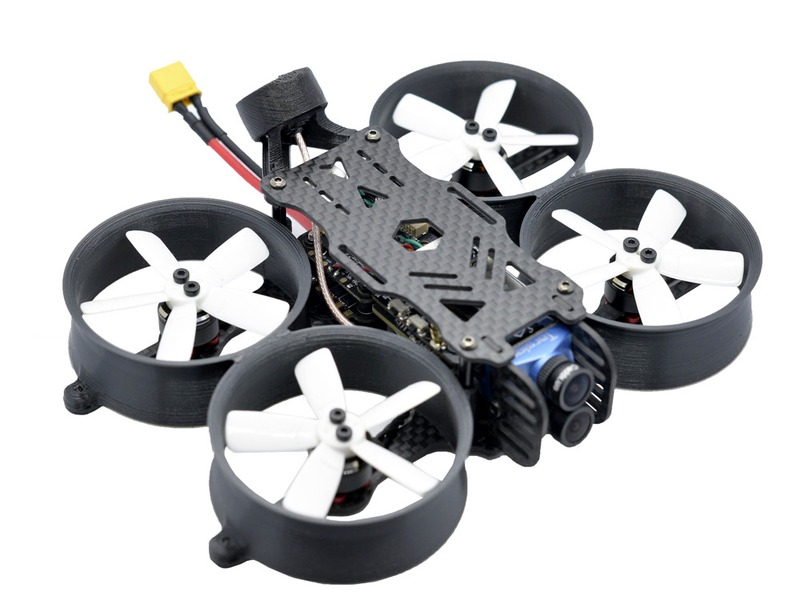How is thrust achieved on a quadcopter?

Thrust is the force that is generated by a quadcopter to propel it forward or upward. It is the primary source of power for a quadcopter and is created by the four propellers that make up the quadcopter’s rotors. The four rotors spin in opposite directions to create a rotating force known as torque. This torque is transferred to the air and generates lift, which in turn causes the quadcopter to move.
To understand how thrust is created on a quadcopter, it’s important to understand the Bernoulli Principle. This principle states that as the speed of a fluid (in this case, air) increases, its pressure decreases. This means that the faster the rotors are moving, the more pressure the air around them has and the more lift they generate.
When the rotors are spinning, air is drawn into the propellers and the pressure drops. This causes the air below the quadcopter to be at a higher pressure than the air above it, creating lift. This lift causes the quadcopter to move upward.
To control the thrust of a quadcopter, the speed of the rotors is adjusted. The amount of thrust depends on the speed of the rotors. The faster the rotors spin, the more thrust is generated. Generally, to move forward or upward, the rotors are sped up and to slow down or stop, the rotors are slowed down.
In addition to the rotors, the weight of a quadcopter also affects its thrust. A heavier quadcopter requires more thrust to move the same distance as a lighter quadcopter. This is because the heavier quadcopter needs to move more air to generate the same amount of lift as the lighter quadcopter.
Finally, the type of motor used on a quadcopter also affects its thrust. Brushless motors are the most efficient and generate more thrust than brushed motors. Typically, they are also more expensive and require more maintenance.
In summary, thrust is achieved on a quadcopter by spinning its four motors in opposite directions. This creates a rotating torque which is transferred to the air and generates lift. The speed of the rotors and the weight of the quadcopter both affect the amount of thrust generated. Brushless motors are generally the most efficient type of motor for a quadcopter and generate the most thrust.
Comments / Question
2. Motor power: The power of the motors affects the amount of thrust generated. Motors with higher power outputs are able to generate more thrust than those with lower power outputs.
3. Battery voltage: The voltage of the battery affects the amount of thrust generated. Batteries with higher voltage are able to generate more thrust than those with lower voltage.
4. Propeller pitch: The pitch of the propellers affects the amount of thrust generated. Propellers with higher pitch generate more thrust than those with lower pitch.
5. Air pressure: The air pressure affects the amount of thrust generated. Higher air pressure produces more thrust than lower air pressure.
6. Air temperature: The air temperature affects the amount of thrust generated. Higher air temperature produces more thrust than lower air temperature.
7. Altitude: The altitude affects the amount of thrust generated. Lower altitudes produce more thrust than higher altitudes.

